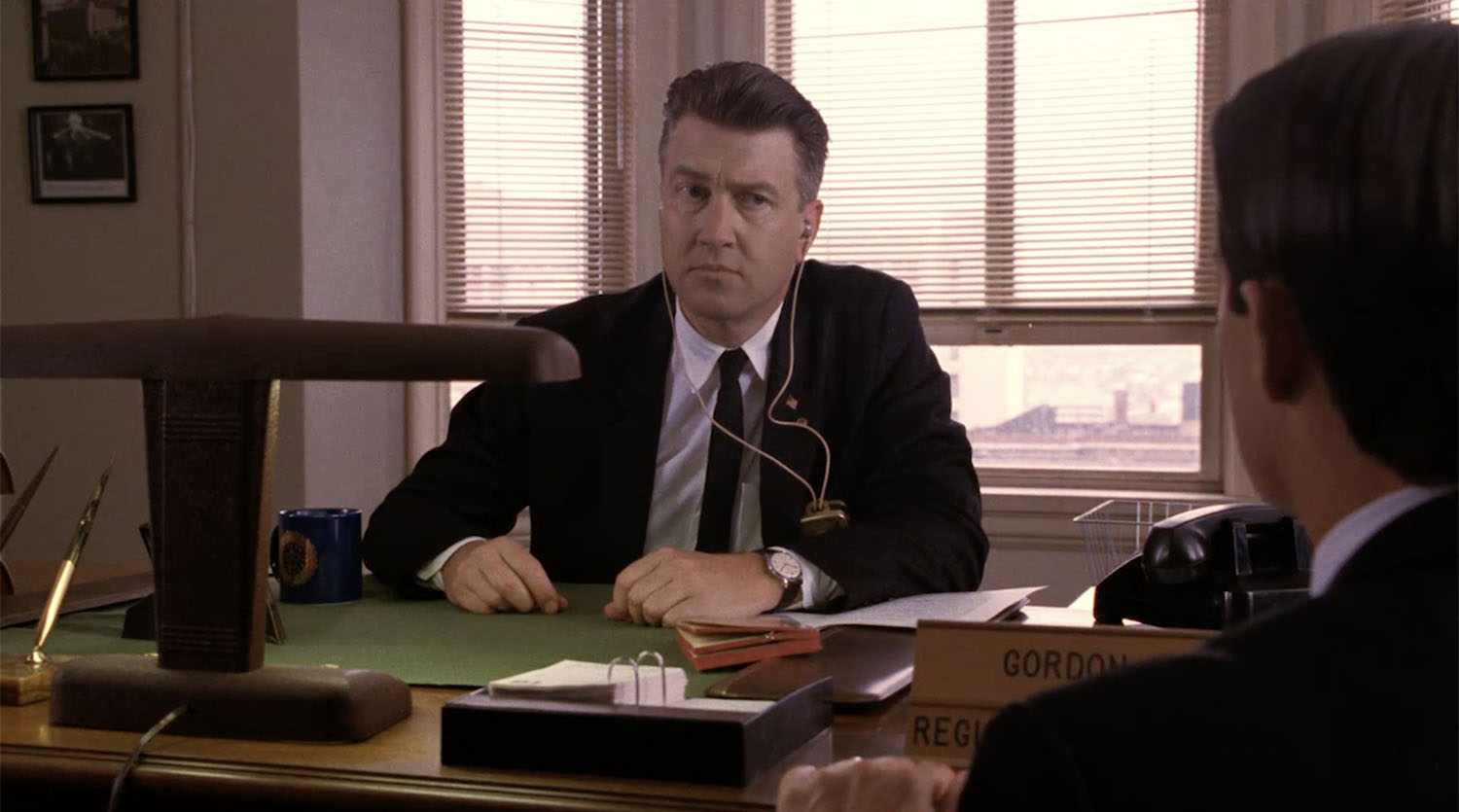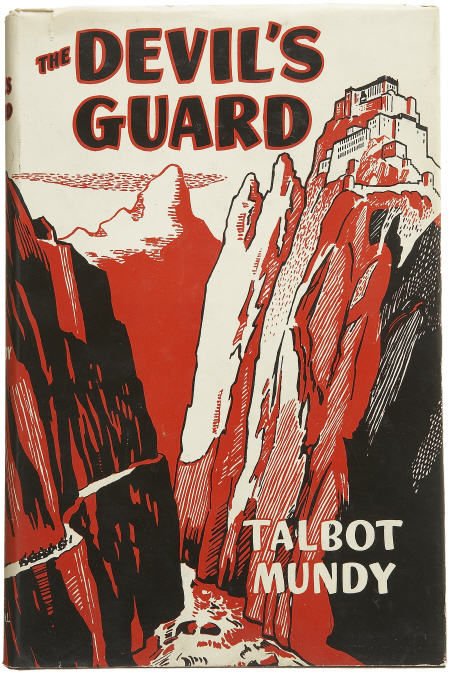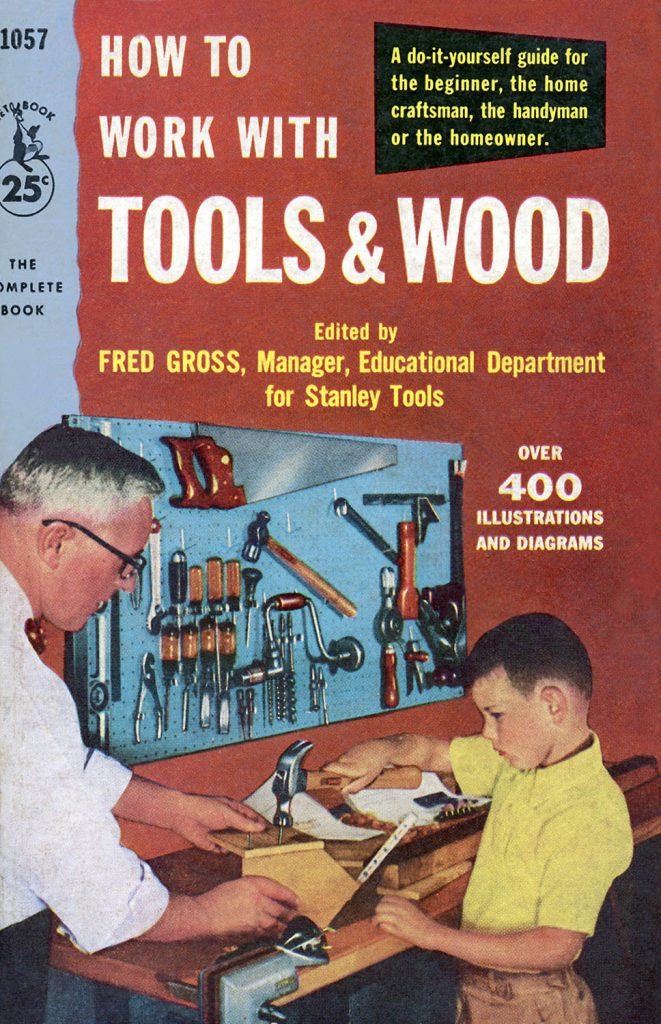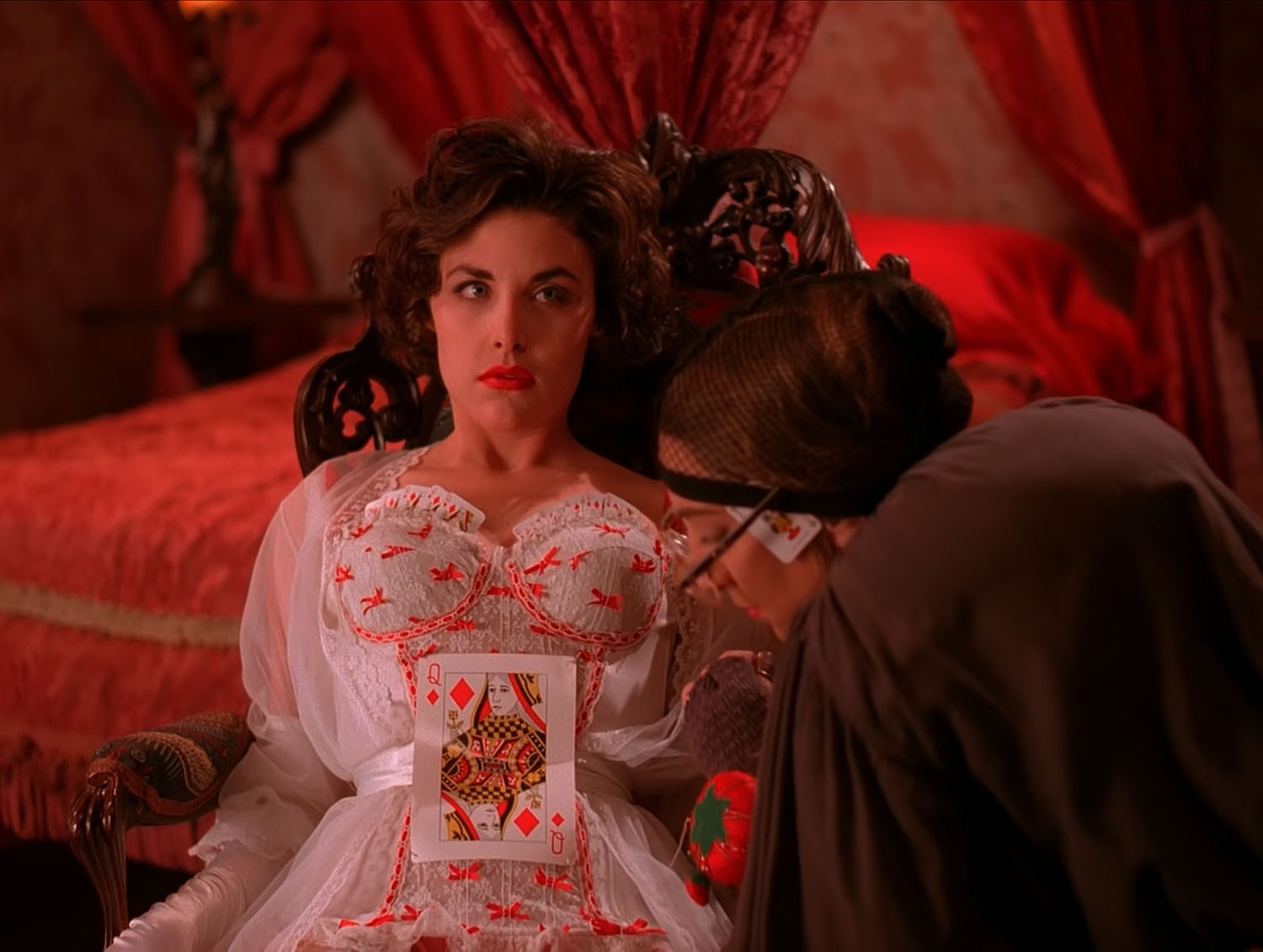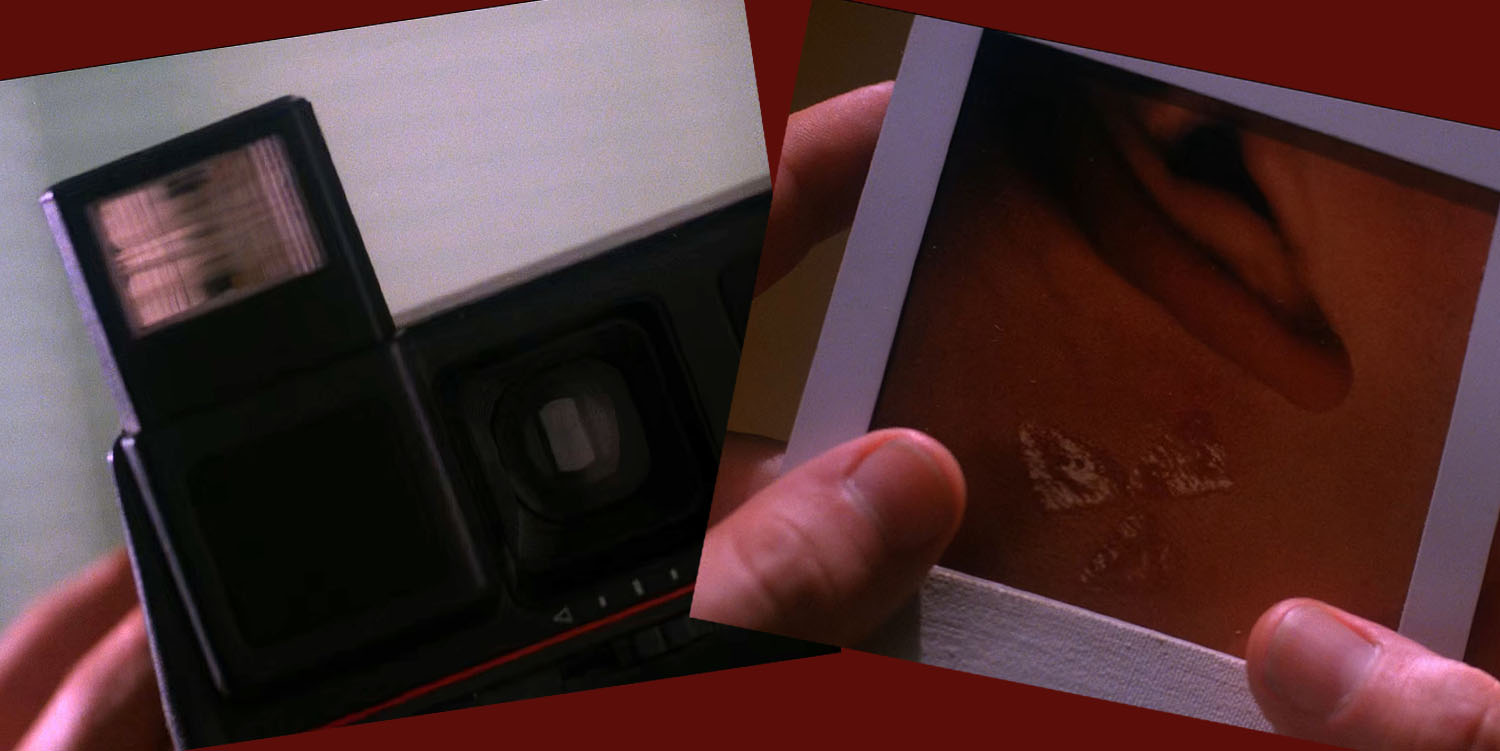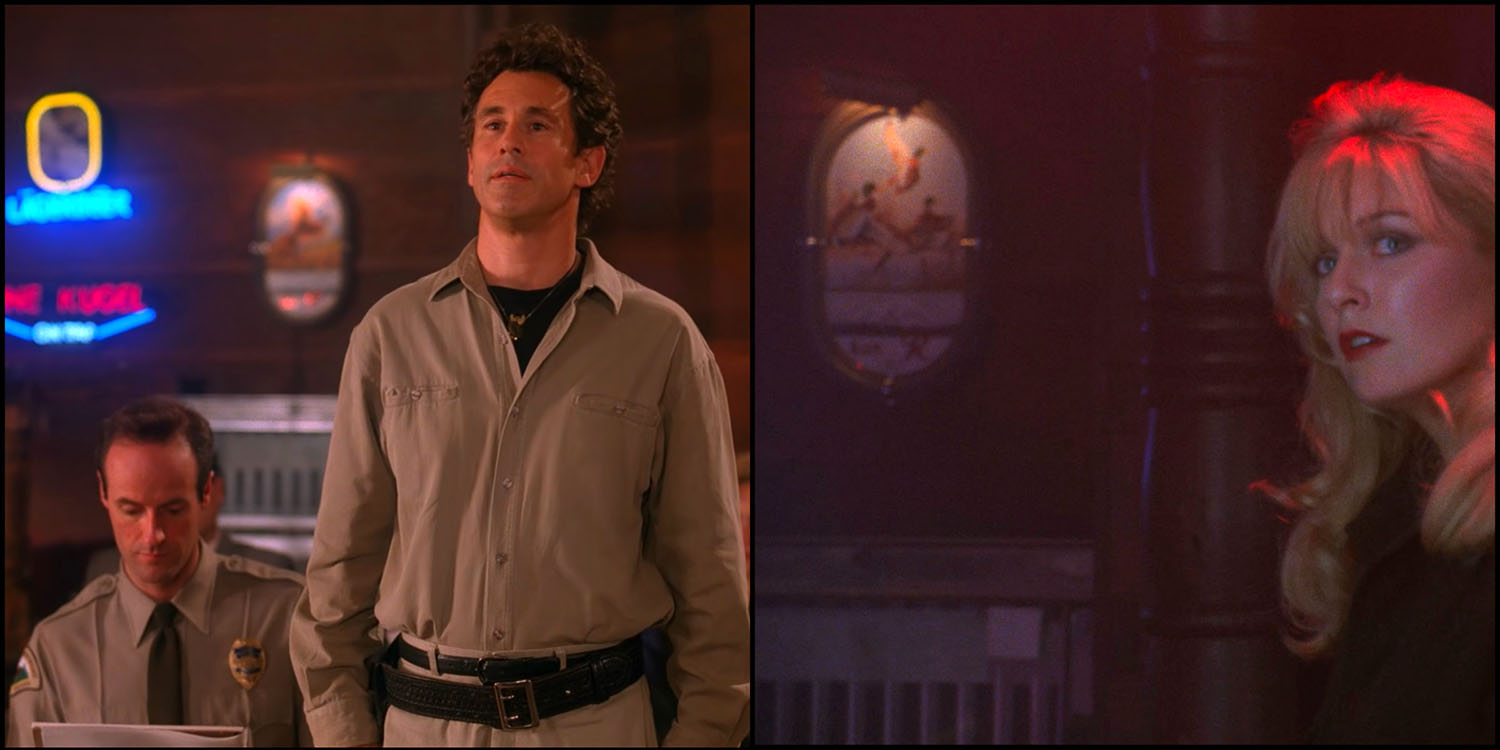More than three decades after its debut, the mysteries from David Lynch’s masterpiece Twin Peaks: Fire Walk With Me are still being solved. Using modern technology combined with a tenacious spirit, fellow Bookhouse Boy Matthew Haywood has helped discover Agent Sam Stanley’s Whiteman Machine and Laura Palmer’s textbook. Now, he’s found a match for Regional Bureau Chief Gordon Cole’s paperback book found in the FBI Headquarters in Philadelphia, Pennsylvania.
SEARCHING FOR GORDON COLE’S BOOK AT FBI HEADQUARTERS IN PHILADELPHIA
For years, I’ve wondered what book Gordon Cole (played by David Lynch) was reading at the FBI Headquarters in Philadelphia. The scene was shot on location in the former Cabrini Hospital in downtown Seattle, Washington. This means everything on the set was brought to that location, including props and other set decorations.
In July 2018, I published this article identifying several items from this scene but I was unable to find Cole’s book: “I attempted to identify Gordon Cole’s paperback novel on his desk (it doesn’t seem to be the “The Devil’s Guard” by Talbot Mundy). I will find it one day.”
Why did I think it was Mundy’s 1926 pulp novel about a “high adventure and magic set in India and Tibet?” Early in the days of my fandom, John Thorne, author and co-editor of the incomparable fan magazine Wrapped in Plastic, discussed how Mundy’s tale would find plot elements in Twin Peaks decades after it was published.
“Mundy constructs his tale around the struggle between the Black and White Lodges,” John wrote on May 26, 2016 for his blog “Above the Convenience Store.” “He also throws in the idea of dugpas, bodily-possession by evil spirits, and the hallowed nature of the Dalai Lama. Many of these plot elements would find a new and wider audience when they re-emerged on Twin Peaks, sixty five years after The Devil’s Guard was published.”
Looking back, I’m not sure what made me think it was Mundy’s book aside from the red-hued cover.
Then on January 21, 2025, Matthew contacted me with the left above.
“This isn’t ideal but this is the best I’ve been able to enhance the FBI office desk’s book cover,” he said. “I don’t think I’ll be able to pull any more detail out than this. I avoided stretching it vertically too far as it would make what is there illegible. Hopefully, this will be enough to find a match someday.”
I rotated the image. I thought maybe it was the word “The.” The red edges of the paperback novel made me think it was from the 1950s, some kind of Noir thriller perhaps. John Joseph on Quora offer insight about why certain books have red edges.
“The red edges on old pulp paperback books serve both a practical and aesthetic purpose,” he explained. “Functionally, they help protect the pages from wear and tear, as well as from yellowing and other signs of aging. The red dye used for the edges acts as a sealant, reducing the penetration of dirt, moisture, and insects.”
I searched a few more times for a 1950s pulp novel that would match. No luck.
At 9:38 a.m. on January 24, 2025, Matthew followed up with a short message – “I’ve found the FBI desk book.”
IDENTIFYING GORDON COLE’S BOOK
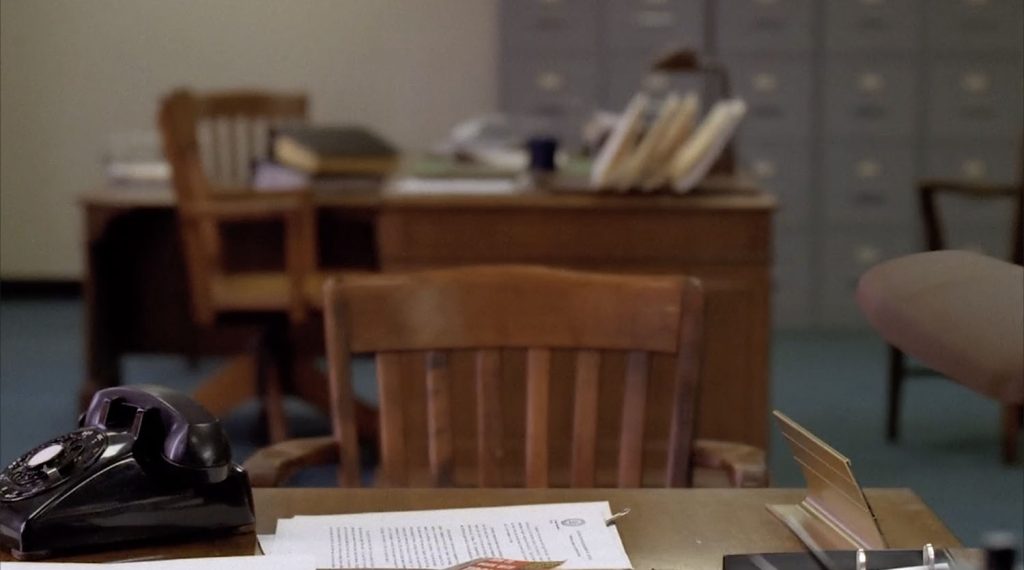
“So in The Missing Pieces, in the shot where Jeffries disappears and the camera rack focuses back and forth, there are three frames where the top of the book is in focus,” wrote Matthew. “The book was close enough to camera to capture some detail. I perspective-corrected the sharpest frame of those and was able to pick out some words.”
He then shared this corrected image which revealed more details. At this point, I couldn’t believe what I was seeing – he actually identified enough of the book’s cover to find a match.
“I searched those key words on Archive.org and, keeping in mind the layout of the top of the front cover led to a match pretty quickly,” he continued.
Cole’s book was “How to Work with Tools and Wood” by Fred J. Gross, a 1950s instructional book edited by the manager of Educational Department for Stanley Tools of New Britain, Connecticut. Matthew found a digital copy of the book is available on the Internet Archive. He also shared a match he found on eBay, which I quickly purchased and will provide high resolution scans once received. The cover photo was taken by Meyers Studios.
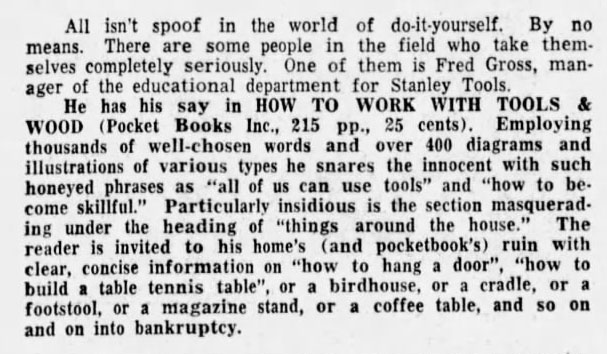
Based on an article from The Charlotte News, the book was first published by Pocket Books, Inc. around June 4, 1955. The 215-page book contains 400 diagrams and illustrations and originally sold for 25 cents.

Later editions have a yellow stripe on the cover whereas the book in Twin Peaks: Fire Walk With Me has a gray stripe.
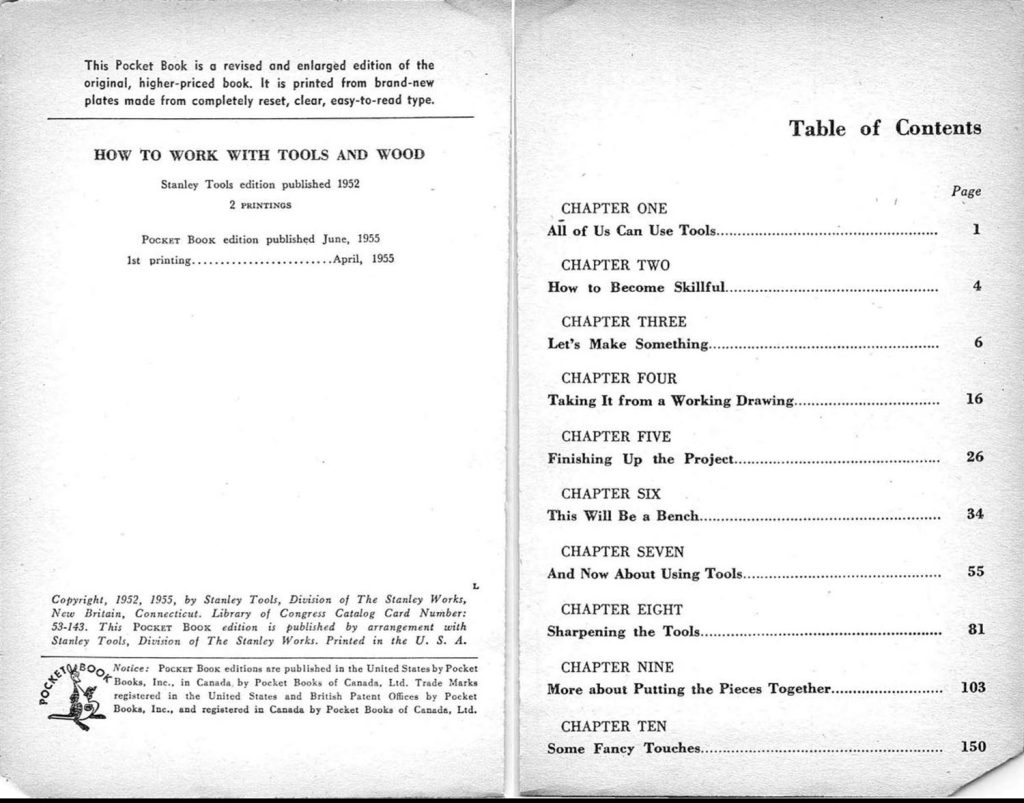
According to the book on the Internet Archive, this Pocket Book is a “revised and enlarged edition of the original, higher-priced book.” The Stanley Tools edition was first published in 1952 while the Pocket Books edition was published in 1955, with a 1st printing in April 1955. A sampling of the Table of Contents lists various topics such as “All of Us Can Use Tools,” “This Will Be A Bench,” “Sharpening the Tools” and more.
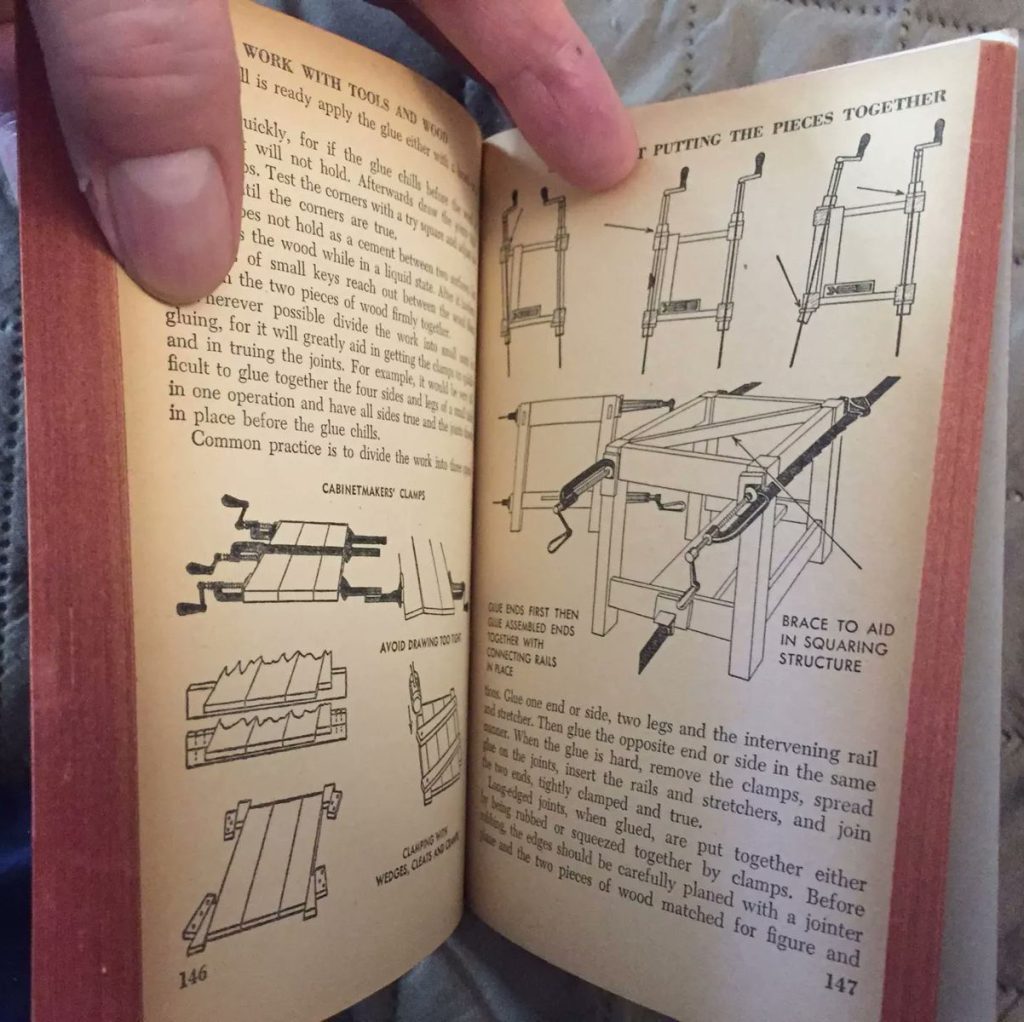
A preview from the eBay auction shows the kinds of illustrations and details from Mr. Gross. I’m hopeful I can determine what chapter Cole was reading when I receive my copy.
WHO IS FRED J. GROSS?
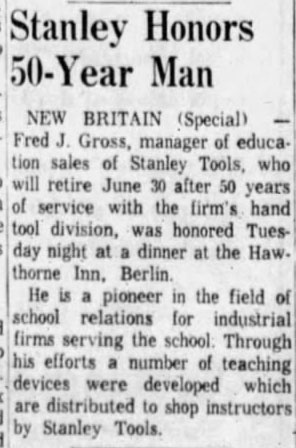
Born in 1894, Fred J. Gross served as the manager of education sales of Stanley Tools for 50 years. Born in New York City, Gross lived in Newington, Connecticut for 45 years. He attended New York schools and Miner’s Business Academy, in Brooklyn, New York. He was a member of Epsilon Pi Tau fraternity of Columbus, Ohio, a life member of the Connecticut Industrial Arts Association, a member of the New Jersey Vocational Arts Association, and the New England Industrial Arts Teachers Association.
Gross was awarded the Purple Heart by the Army during service in France in World War I. He was a member of the 101st Machine Gun Battalion Association and of the Yankee Division Association. According to the Hartford Courant on June 22, 1960, Gross retired from the tool company on June 30. He was instrumental in developing educational tools such as his paperback book discussed in this article.
On August 16, 1970, Gross died aboard the M.S. Gripsholm while on a cruise near Scandinavia. He left a wife, Mrs. Maudie Crozier Gross; a son, Fred J. Gross Jr. of Glastonbury; a daughter, Mrs. William Walsh of Glastonbury and four grandchildren.
Sadly, I did not find a photo of Mr. Gross.
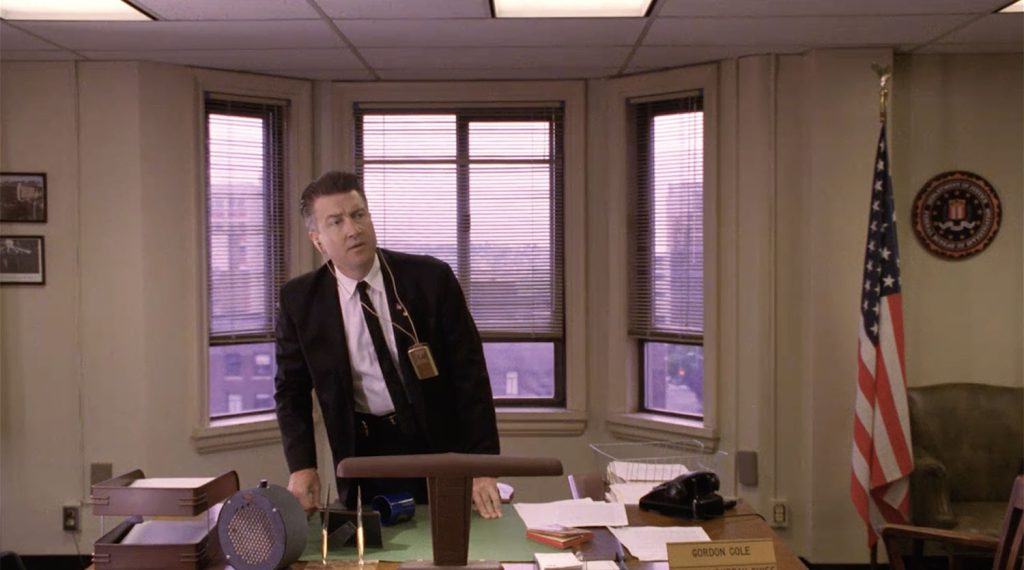
Knowing David Lynch’s love of woodworking and projects, I imagine he purposely selected this book for the scene. Matthew agreed saying, “I love how he put aspects of his own personality and interests into Gordon. I wonder if the book was perhaps David’s own copy.”
We may never know the answer, but it is a thrill to add another book to my ever growing Twin Peaks replica collection.
Shortly after publishing this story, John Thorne shared this awesome quote from David Lynch about wood from “The World Reveals Iteself, an interview with David Lynch by Katherin Spohr from Form Magazine, #158 in February 1997.
Thank you again to Matthew for his tireless effort to finding and identifying these props. You can see an ever growing catalog of these items on Twin Peaks Blog.
Discover more from TWIN PEAKS BLOG
Subscribe to get the latest posts sent to your email.

